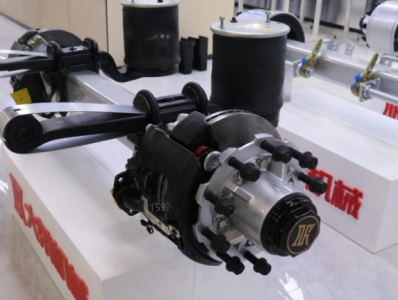Is the vehicle prone to deviation when driving?
Vehicle deviation is a relatively common problem. When the deviation is serious, the driver needs to twist the steering wheel or even turn it at a certain angle to ensure that the vehicle goes in a straight line. Such a long-distance running will easily cause driving fatigue. When encountering emergency braking , due to the uneven braking force, it will also cause the vehicle to deviate or even turn around, especially when meeting cars, it is prone to scratches or collisions that seriously affect driving safety.

It is worth noting that slight deviation of the vehicle does not belong to the category of faults, because there are almost no vehicles that will never deviate after the steering wheel is released, even if there is no problem with the suspension and wheels. After the steering wheel, the vehicle will gradually deflect to the lower side, unless the car is equipped with "lane keeping assist system".
In addition, it is necessary to distinguish the deviation of the steering wheel. If the steering wheel is straightened and the vehicle does not move while holding the steering wheel, it is a misalignment of the steering wheel and not a true deviation of the vehicle. The problem may lie in the front axle. The toe adjustment is symmetric, and it may also be caused by the rear axle. You can start to adjust the rear axle, and then adjust the front axle. Generally, as long as the rear axle is adjusted, the front axle can be restored if it is not adjusted.

So how to distinguish the vehicle deviation? The owner can hold the steering wheel to let the car go in a straight line, release the steering wheel after walking tens of meters, and pay attention to control the speed of the vehicle. If the vehicle deviates to one side quickly after releasing the steering wheel, it can be judged as a deviation. The main reasons for this phenomenon are as follows:
1. The tire pressure on both sides is inconsistent;
2. The wear degree of tire pattern on both sides is inconsistent;
3. The heights of the tires on both sides are inconsistent. This situation is closely related to the first two. Different tire pressures and wear degrees can easily lead to uneven stress on the tires on both sides, and the problem of inconsistent heights. In addition, different installation times and different tires Brands and different tread patterns can also easily lead to inconsistent tire heights on both sides.
The above situations can be solved by adjusting the tire pressure and changing the tires.
4. There are problems with the tire angle or suspension system parameters. There are many situations in this situation, such as the difference between the two sides of the tire camber angle, the difference between the two sides of the caster angle, the difference between the caster angle and the camber angle, and the serious inclination angle. Asymmetry, too large or too small rear wheel propulsion angle, etc., require professionals to judge and then give corresponding solutions.
5. If there is a problem with the chassis parts, such as the shock absorber, the upper and lower arms, especially if there is a serious problem with one of them, it will cause the vehicle to deviate, and it needs to be checked and replaced in time.
6. Dragging the brake, the brake pedal cannot return to its position in time after the end of the brake, and it needs to be repaired by a professional.
7. Deformation of the trailer axle, such as long-term overloading of the vehicle, high-speed driving on uneven roads, or the quality of the purchased axle is not up to standard, resulting in improper adjustment of the bearings on both sides, looseness or displacement of the rear axle half-axle casing, etc. If the vehicle deviates, just find a repair shop for inspection, correction or replacement.
8. For the replacement of one side of the chassis, especially the suspension parts or rubber sleeves, it is recommended to replace both sides at the same time. Otherwise, one side is new and the other side is old, and the degree of wear and tear is different, and the vehicle will naturally not run in a straight line.
9. The problem of vehicle design. For vehicles produced according to the national standard, there is an error of 2-3cm in the vertical height of both sides. The higher the standard, the smaller the height difference of the vehicle. The production process of some vehicles is not up to standard, and the body on both sides is high on one side and low on the other. , It may also cause the vehicle to deviate, so if the new car deviates beyond repair, you can apply for a replacement if it exceeds the national standard.

There are many reasons for the deviation of the vehicle, and some uncommon ones are not listed here. If the owner encounters the deviation of the vehicle, he can check the tires, brakes, loading, suspension, four-wheel alignment and other problems. It is best to leave the problem to professional maintenance personnel, and pay more attention to the state of the vehicle at ordinary times. Try to choose quality and reliable trailer axles, trailer suspension and other chassis components. After all, safety is no small matter, and it is worthwhile to be cautious.







